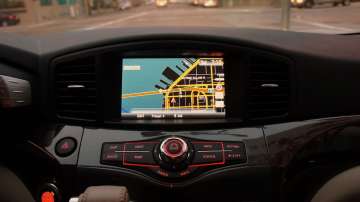A reliable and accurate navigation system developed by a group of specialists that uses existing environmental signals such as cellular and Wi-Fi, as opposed to the Global Positioning System (GPS), could soon change the way we negotiate through unknown territory.
The technology can be used as a standalone alternative to GPS, or complement current GPS-based systems to enable highly reliable, consistent, and tamper-proof navigation.
It could be used to develop navigation systems that meet the stringent requirements of fully autonomous vehicles, such as driverless cars and unmanned drones, researchers at the University of California, Riverside (UCR) in the US said.
Most navigation systems in cars and portable electronics use the space-based Global Navigation Satellite System (GNSS), which includes the US system GPS, Russian system GLONASS, European system Galileo, and Chinese system Beidou.
For precision technologies, such as aerospace and missiles, navigation systems typically combine GPS with a high-quality on-board Inertial Navigation System (INS), which delivers a high level of short-term accuracy but eventually drifts when it loses touch with external signals.
Despite advances in this technology, current GPS/INS systems will not meet the demands of future autonomous vehicles for several reasons.
GPS signals alone are extremely weak and unusable in certain environments like deep canyons, and such signals are susceptible to intentional and unintentional jamming and interference.
Civilian GPS signals are unencrypted, unauthenticated, and specified in publicly available documents, making them spoofable (hackable).
Current trends in autonomous vehicle navigation systems, therefore, rely not only on GPS/INS, but a suite of other sensor-based technologies such as cameras, lasers, and sonar.
"By adding more and more sensors, researchers are throwing 'everything but the kitchen sink' to prepare autonomous vehicle navigation systems for the inevitable scenario that GPS signals become unavailable," said Zak Kassas, assistant professor at UCR.
"We took a different approach, which is to exploit signals that are already out there in the environment," Kassas said.
Instead of adding more internal sensors, the team has been developing autonomous vehicles that could tap into the hundreds of signals around us at any point in time, like cellular, radio, television, Wi-Fi, and other satellite signals.
The research exploits these existing communications signals, called "signals of opportunity (SOP)" for navigation.
The system can be used by itself, or, more likely, to supplement INS data in the event that GPS fails.
The team's end-to-end research approach includes theoretical analysis of SOPs in the environment, building specialised software-defined radios (SDRs) that will extract relevant timing and positioning information from SOPs, developing practical navigation algorithms and finally testing the system on ground vehicles and unmanned drones.
(With inputs from PTI)
Latest Business News
